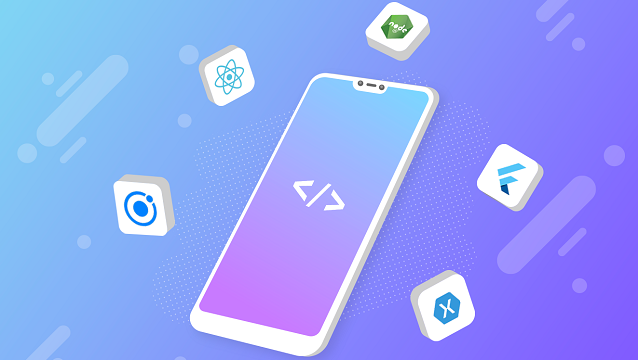
Mobile APP Frame Works
Today I will be talking about choosing the best mobile app framework when making your first application. It can be too difficult to decide from all the different options that are available for us. It’s not easy to choose our mobile app framework as there’s a lot of information out there. Let’s start today by talking about the first party native apps. Now these are the tools created by the creators of iOS and Android they also make the Xcode development toolkit that allows you to create native iOS apps in Objective C . The Swift Google who makes Android as Android studio that allows us to make native Android apps in Java and Kotlin. The benefits of using first-party native apps is we get a native UI UX. Google use different programming language there are tool sets and so we cannot reuse the same code between our apps so even though our apps look similar have the same features we will have to rewrite those apps twice in two different code bases with two different programmers thus increasing the development costs. The benefit of Apple IOS And Google IOS is we always use the first party tools whenever Apple releases a new feature or a new API it’ll be there in Xcode the same day whenever Google releases a new feature a new API it’ll be available to us in Android studio that same day. So we never have to worry about falling behind and we never have to worry about whether or not there will be support for these tool sets because they’re made by the creators of the operating system. Another option is progressive web apps now a progressive web app is essentially a website that is running locally on our device with progressive web apps we create the UI just like we would for a website and there’s many different technologies available from Microsoft’s blazer native script angular js react to iconic. These are tools that most web developers are already familiar with now the benefit here is you might already have a team of web developers that created your website and we can repurpose those skills for our mobile app. The one downside that I don’t like is that the UI or the user experience with progressive web apps. In this case UI will have to be bespoke on iOS and Android if we were using the native first-party toolkits like Xcode and Android studio. These comes with buttons they come with navigation tools and we easily get those for free, but with progressive web apps we are recreating those tools those UI elements in our web frameworks and so we essentially have to recreate that same look and feel that we would get for free. If we were using a native app one big improvement is the development of speed. The code we write for our PWA will run on both iOS and Android so we don’t need to rewrite that code multiple times for the different platforms and that also reduces our maintenance costs. if we were using the first-party frameworks then we would have to do is recompile our app to get that native look ,again a feel performance is also a little bit slower than with a native app. It’s about a 10 millisecond response time for a button click and with a progressive web app we’re looking at about a hundred millisecond response time. It is very interesting discussions as now 100 milliseconds is still well below with a threshold that a user would even notice but if we’re creating something that’s fast-moving that needed quick response times like a game then maybe progressive web app wouldn’t be the best choice in that scenario. So the conclusion about this topic is which mobile app framework is the best. I will say that the one that’s best for your team. We all know that every team is going to have different scenarios, different capabilities as long as we understand the trade-offs between native first party, PWA and cross-platform native. We can ensure that we choose the best mobile framework for our team. So I have discussed some mobile app frameworks which is very important now a days.

Leave a Reply